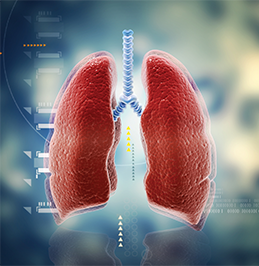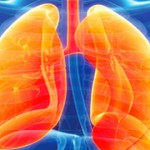
Image Credit: Creations/SHUTTERSTOCK.COM
Researchers from California and Texas have identified a new genetic syndrome that is characterized by systemic autoimmune disease of the lung and joints. The syndrome is driven by a genetic variant of a vesicular transport protein and is the first documented association between intracellular transport and autoimmunity.
Levi B. Watkin, PhD, postdoctoral fellow at Baylor College of Medicine in Houston, Texas, and colleagues published the results of their extensive research online April 20, 2015, in Nature Genetics.1 They used the latest whole exome sequencing techniques to identify genetic variants associated with an autoimmune syndrome of severe lung disease and arthritis. The study represents the first time that the hereditary disorder has been diagnosed as a single syndrome. The research also revealed a novel biological mechanism underlying autoimmune disease.
Finding Patients
The project began when Anthony K. Shum, MD, assistant professor of Medicine at University of California, San Francisco (UCSF) and co-senior author of the study, learned of a woman admitted to the emergency department at UCSF with pulmonary hemorrhage.
“For me, it started with a single family and actually a patient encounter,” explained Dr. Shum to The Rheumatologist. His initial interest in the patient stemmed from his desire to identify an autoimmune disease that affected the lung and determine its underlying genetic cause. As a young investigator, he had had his laboratory for just three years and he felt that identifying such a genetic cause would prove a good focus for his laboratory, especially since monogenetic disorders have been quite useful for identifying biological mechanisms underlying pathology. He also felt that there could be far-reaching implications for such a finding because, “there clearly is this link between arthritis and lung disease.”
Dr. Shum spoke with the patient’s mother in the hospital corridor and learned that a distant cousin had a two-and-a-half-year-old daughter under treatment for pulmonary hemorrhage at a nearby hospital. The mother did not actually know the cousin or the cousin’s daughter, and did not hear about the sickness directly from family members. Instead, she heard about the similar disease via mutual Facebook friends. Dr. Shum visited the child and learned that she had pulmonary hemorrhage and arthritis. He knew the identification of two related patients with similar symptoms “was going to significantly improve our chances of finding a gene.” Dr. Shum wanted to further increase his odds, however, so he and a team of UCSF medical students began to search for other affected family members. They were able to identify a distant relative in another state who had similar symptoms.
Finding Collaborators
Dr. Shum also reached out to physicians at other institutions to see if a similar cluster of patients had been identified elsewhere. Co-senior authors Jordan S. Orange, MD, PhD, director of Texas Children’s Hospital Center for Human Immunobiology, and James R. Lupski, MD, PhD, Cullen Professor of Molecular and Human Genetics at Baylor, contacted him with reports of similar cases, and the researchers decided to work together. When they pooled their patients, the group had a total of 20 affected individuals in five unrelated families who appeared to have a mendelian syndrome of autoimmunity with high-titer autoantibodies, inflammatory arthritis and interstitial lung disease. The patients first presented with disease at approximately age 3 years, although there was a range of 6 months to 22 years. The investigators were also intrigued by the fact that several additional members of the family had a diagnosis of rheumatoid arthritis. The patients were receptive to the physician efforts and expressed pleasure that their rare disease was not only on the path to recognition, but also that investigators were seeking to understand the syndrome and develop treatment options.
Implication of Chaperone Protein
What the researchers found surprised them. The genetic analysis identified a region of the genome encoding the ubiquitously expressed gene for COPA (coatomer subunit α), a resident chaperone protein in the endoplasmic reticulum (ER). Between them, the affected patients had four unique harmful variants in the COPA gene that all affected the same functional domain: a 14-residue region of the WD40 domain of COPA. The autosomal dominant COPA mutation was inherited with a normal copy of COPA. Genetic analysis of the family was confounded by the fact that the dominant mutation has incomplete penetrance. Thus, patients do not need to have a clear family history in order to indicate that a COPA mutation is important in their pathology.
A great deal of what is known about COPA comes from analysis of yeast. Randy Sheckman, PhD, of the University of California, Berkeley was awarded the Nobel Prize in Physiology or Medicine in 2013 for his discoveries of machinery regulating vesicle traffic. He identified a complex of three proteins that together attach to the surface of the endoplasmic reticulum. This attachment must precede budding of the membrane and the formation of transport vesicles. The complexes are known as coat protein complex I (COPI) and coat protein complex II (COPII). Thousands of these complexes coat the budding surface of a vesicle, creating a sac and recruiting the correct protein cargo. COPA represents a subunit of COPI and appears to be important in intracellular transport via COPI. Although COPII transports from the rough ER to the Golgi complex, COPI transports from the Golgi complex to the rough ER. The pathways have been fleshed out to some extent; however, most of the research has taken place in yeast, and the system has not been well studied in mammalian cells.
Once COPA had been identified as the relevant protein, the investigators measured COPA expression in the affected patients. They were surprised to discover that COPA was expressed at normal levels in these individuals. Recognizing the essential nature of the COPA protein for intracellular transport, Dr. Shum and colleagues next determined the functional consequence of the COPA variants. They hypothesized that the mutant COPA resulted in defective intracellular transport via COPI. This was supported by the observation that the COPA mutations seen in the patients appeared to render the protein dysfunctional. Further investigation revealed that the COPA variants impaired binding to proteins targeted for retrograde transport (Golgi-to-ER). Although the experiments stopped short of specifically demonstrating a trafficking defect, such a defect is the most likely explanation for the data.
Trigger of Autoimmunity
The investigators then sought to identify physiological effects of COPA variants that might link the mutation mechanistically with autoimmune disease. They performed dynamic functional assessments of patient-derived cells and found evidence of ER stress in patients with mutant COPA. In an attempt to understand the specific role of mutant COPA on ER stress, the researchers performed small interfering RNA (siRNA)–mediated knockdown experiments in human embryonic kidney (HEK) cells. The results confirmed the ER stress, but the investigators were unable to determine how the ER stress led to autoimmunity. Although the path to pathology has not yet been elucidated, the authors propose the possibility that the COPA mutation might compromise autophagy. The hypothesis stems from previous studies that have indicated an association between autophagy and autoimmunity.
Patients do not need to have a clear family history in order to indicate that a COPA mutation is important in their pathology.
The team next examined CD4+ T cells in individuals with mutant COPA. They found that patient-derived CD4+ T cells were significantly skewed toward the T helper type 17 (Th17) phenotype implicated in autoimmunity. Moreover, BLCLs derived from patients with mutant COPA showed significant elevations of transcripts encoding interleukin (IL) 1β, IL-6 and IL-23. Thus, faulty protein trafficking by mutant COPA resulted in cellular stress as well as upregulation of cytokines that triggered a Th17 response. The investigators hypothesize that such an impairment in the cellular trafficking may mean that misfolded proteins are being mistakenly released. It is possible that these misfolded proteins trigger an autoimmune response due to their cryptic nature.
Why the Lung?
The investigators do not have an explanation for why this mutation preferentially affects the lung. “That’s the big mystery,” noted Dr. Shum. “Why the lung? Why the joint?” COPA is ubiquitously expressed and so it seems strange that the autoimmune syndrome is restricted to the lung and joints. He hypothesized that cells in the lung and joint may be particularly dependent on the retrograde transport.
Although Dr. Shum’s focus is the lung, he acknowledges that there will also likely be a connection to the gut. The patients did not have overt gut problems; however, there were instances of failure to thrive as well as, possibly, nutritional deficiencies. The researchers are continuing to investigate the specificity of the effect in the lung.
Animal models of the COPA mutation do not yet exist, and Dr. Shum suspects that a knockout would be embryonically lethal. He and his colleagues are, however, actively exploring the possibility of an animal model.
Clinical Implications
Dr. Shum suggests that any child who presents with pulmonary hemorrhage, interstitial lung disease and arthritis be sequenced for the COPA mutation so they may be given a diagnosis of the syndrome. Such a diagnosis would help patients understand the clinical course of disease.
A treatment for the syndrome does not yet exist, but Dr. Shum and colleagues raise the possibility that drugs that target Th17 cells may be beneficial for these patients. In particular, the investigators are interested in understanding if IL-17 directed therapies may be beneficial in these patients.
Lara C. Pullen, PhD, is a medical writer based in the Chicago area.
Reference
- Watkin LB, Jessen B, Wiszniewski W, et al. COPA mutations impair ER-Golgi transport and cause hereditary autoimmune-mediated lung disease and arthritis. Nat Genet. 2015 Apr 20. doi: 10.1038/ng.3279.



